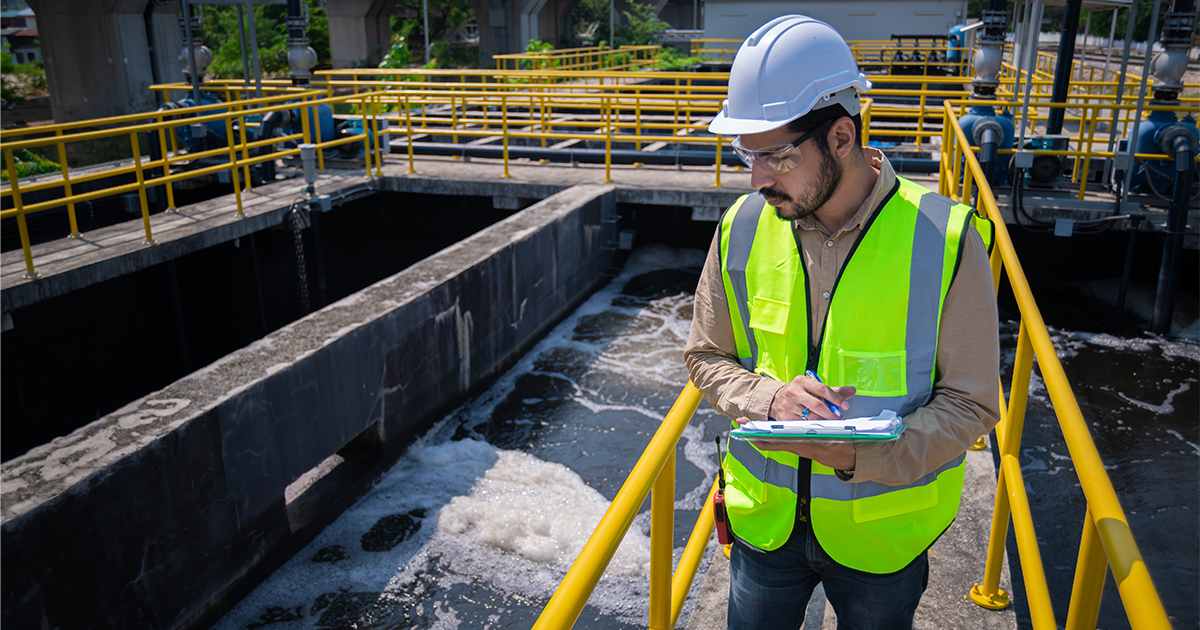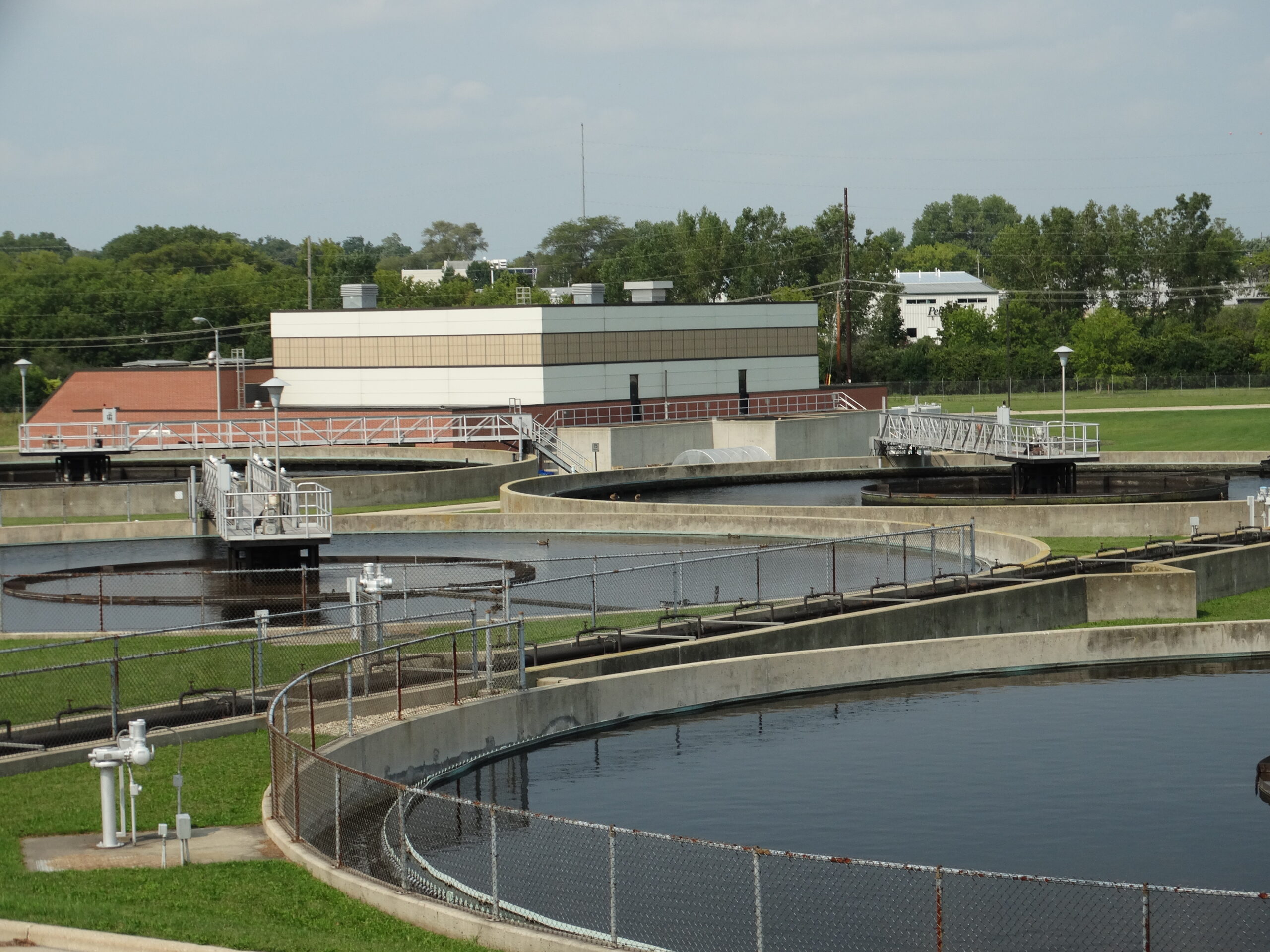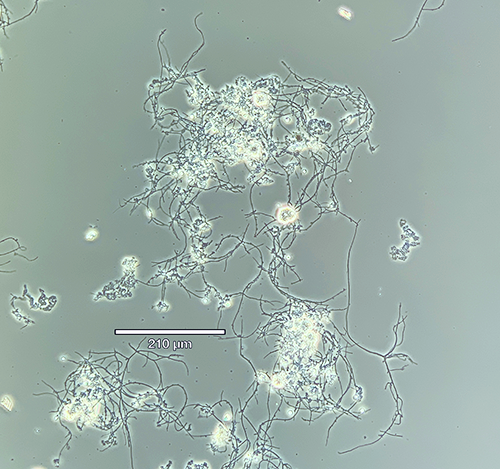All About Essential Nutrients
Complete Phosphorus Guide
The missing link to healthy floc.
by Saylor Gilbert, Research Scientist

This is the second blog in our three-part series on essential nutrients for activated sludge. Specifically, these blogs aim to deepen knowledge on why carbon, nitrogen, and phosphorus are essential nutrients, and why the 100:5:1 C:N:P ratio exists. In the last blog we discussed nitrogen, how bacteria use it, how it’s removed from the system, and why it is vital for biological treatment. Today, we’re discussing phosphorus, the often-overlooked third player in the classic 100:5:1 ratio.
Of the three nutrients, phosphorus is the one most likely to be ignored. Why? Because in most cases, there’s plenty of phosphorus entering the plant. Industrial or municipal, it doesn’t matter. If you test raw influent, you’re almost always going to find that phosphorus is present in more than adequate amounts.
Ironically, this abundance has led many plants to overlook phosphorus as a nutrient entirely. Instead, the focus often shifts to removing phosphorus to meet regulatory effluent limits. Many operators will be familiar with poor phosphorus removal, not poor phosphorus availability.

But here is the kicker: too much removal can backfire. In some advanced nutrient removal facilities, phosphorus is chemically stripped from influent before it enters the activated sludge system so efficiently that bacteria start to suffer; when the bacteria suffer, the whole treatment process does too.
Just like with nitrogen, phosphorus plays a fundamental role in bacterial biology. Without it, the bacteria that drive the activated sludge treatment system can’t function properly. Phosphorus supports microbial life in a few ways:
The Cell Membrane
Bacterial Cells are surrounded by a phospholipid bilayer, a membrane made of molecules with a water-attracting (hydrophilic) “head” and a water-repelling (hydrophobic) “tail”. These molecules organize themselves into a double-layered membrane. The membrane separates the inside of the cell from the outside environment and regulates what goes in and out. The key word here is phospholipid. Phosphorus is literally built into the structure of every bacterial cell membrane. Without it, the cell can’t maintain integrity, it can’t be a cell at all.
Genetic Replication
RNA, the genetic material that tells bacteria how to make proteins and run metabolic processes, also relies on phosphorus. While the nitrogenous bases (A, U, G, C) handle the actual genetic “code,” they’re all linked together by a sugar-phosphate backbone. That backbone holds the entire molecule together. If bacteria can’t build RNA, they can’t make proteins. No proteins = no metabolism, no replication, and no treatment.
ATP
ATP, adenosine triphosphate, is the universal energy currency of life. When bacteria break down material, they generate ATP via the electron transport chain. That ATP is then used to drive everything from nutrient uptake to cell division. As the name suggests, ATP contains three phosphate groups. No phosphorus, no ATP. No ATP, no energy. It’s that simple.
So, we know phosphorus is critical. The problem is, it’s often either too abundant or too scarce, and both situations can cause issues.
In typical municipal systems, influent phosphorus is rarely limiting. In fact, plants often struggle with getting rid of phosphorus. Whether by chemical precipitation, or tertiary filtration, or enhanced biological phosphorus removal (EBPR), many facilities are under pressure to reduce effluent phosphorus concentration; sometimes to levels below 1.0 mg/L, or even 0.1 mg/L.
But some systems have become so effective at phosphorus removal that they can strip it out entirely, leaving the biological system starved for what it needs to function. These are the “suffering from success” plants. When phosphorus becomes limiting, operators may start to see:
- Fragile, fragmented floc structures
- Slow or inhibited cell growth
- Poor settleability and increased turbidity
- Loose extracellular polymeric substances (EPS)
In other words, everything starts falling apart, literally and figuratively.

Phosphorus might not get the same attention as carbon or nitrogen in activated sludge systems, but it deserves just as much respect. While it’s usually present in abundance, overly aggressive phosphorus removal can push a system into deficiency, especially in advanced treatment plants or industrial settings where influent phosphorus is already low.
Understanding phosphorus’ biological roles helps us appreciate just how fragile the balance in our systems really is. Whether you’re troubleshooting a floc issue or optimizing nutrient dosing, don’t forget to check phosphorus. It may just be the missing link.

About the Author
Saylor Gilbert is a Research Scientist for Aquafix and holds a bachelor’s in microbiology. His expert knowledge of toxicity and F.O.G. allows us to push our products forward and continue to provide our customers with top-tier wastewater solutions.

Very interesting blog! Thank you for sharing. In our plants we have to go down to an effluent concentration of about 0.3 total phosphorus so that means that most of the time all ortho-P has been consumed. Following the theory we could get in trouble with P shortage right? But we never really encountered it. We do remove our P chemically but we dose our metal salts not before but after the bioreactor to the secondary clarifiers. Perhaps that is the reason that we do not have had trouble with P limitation. Could I be right?